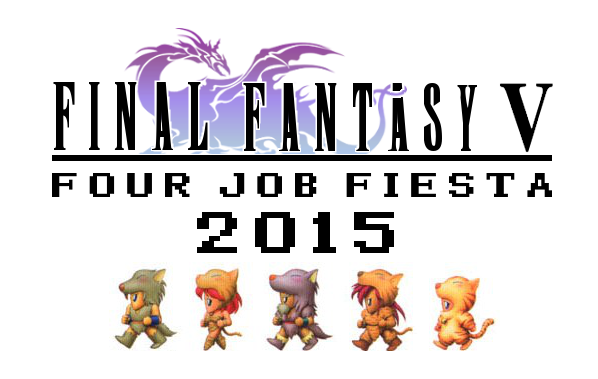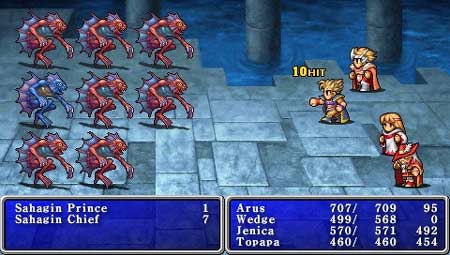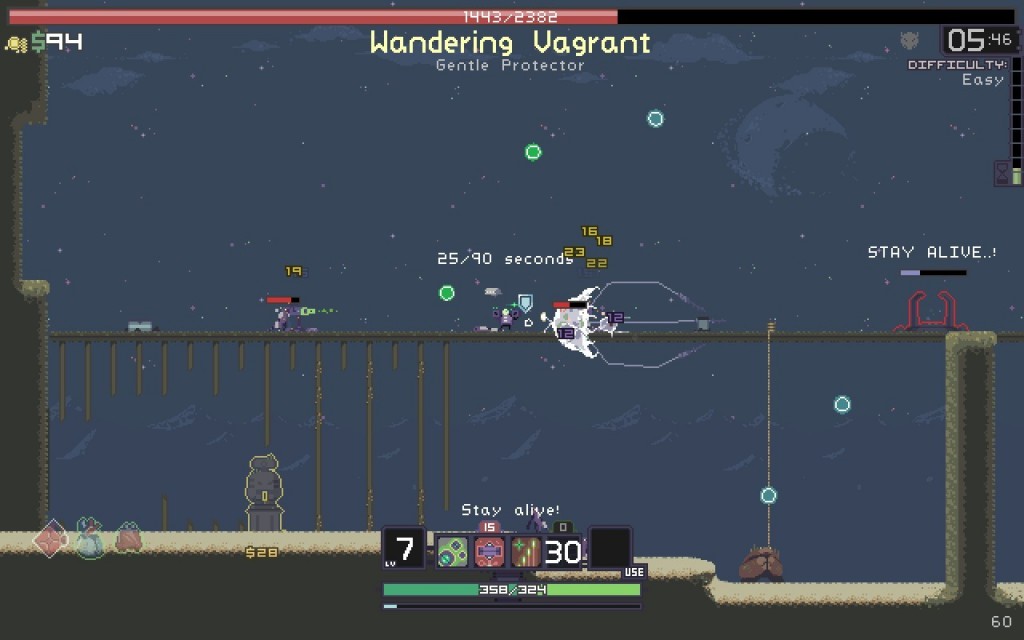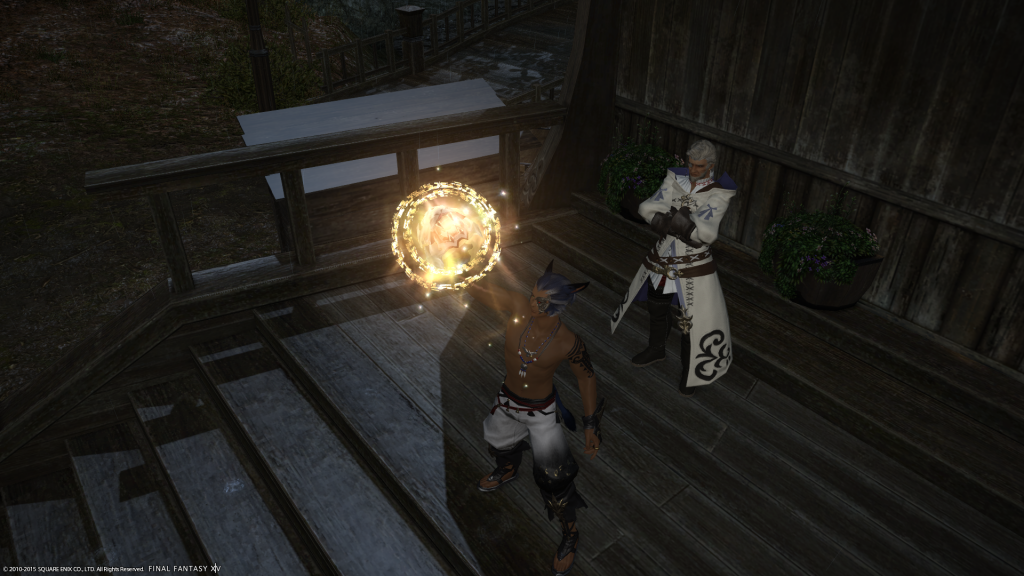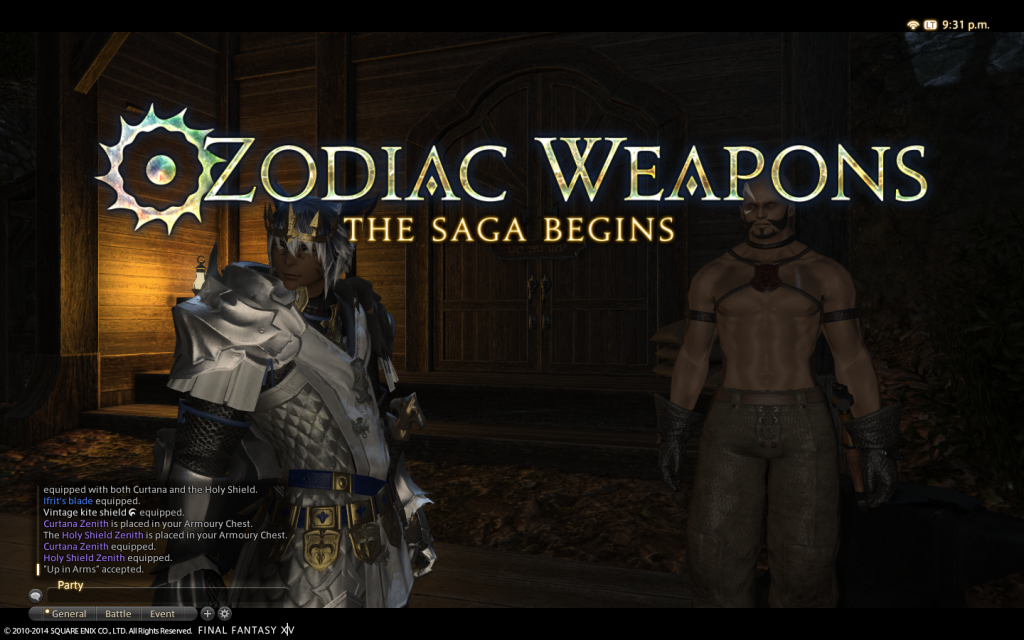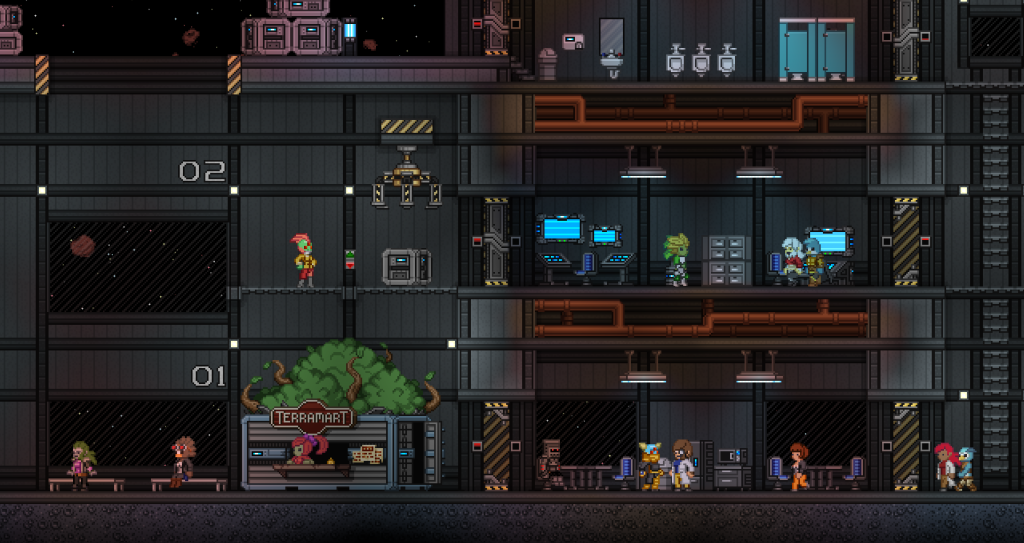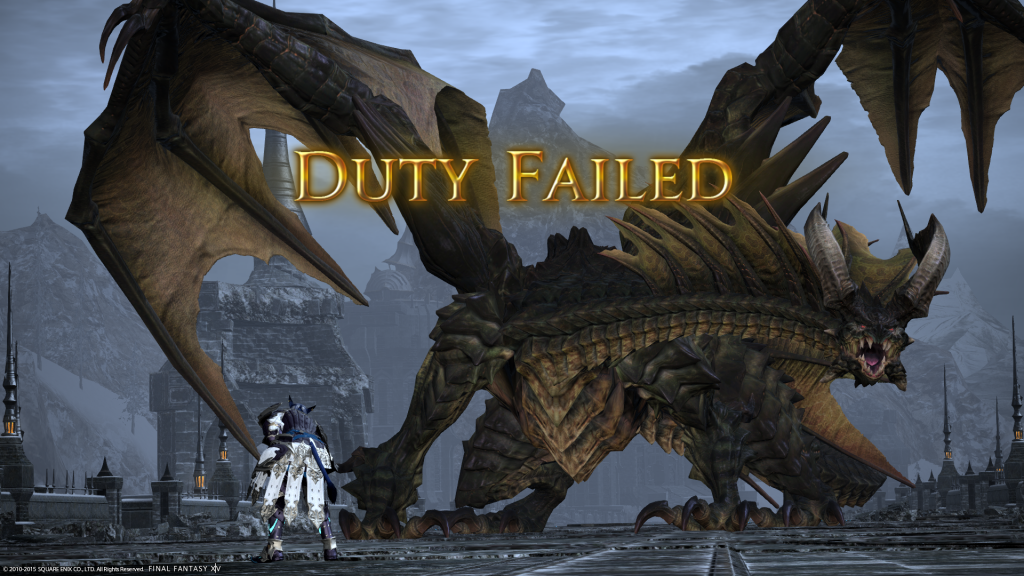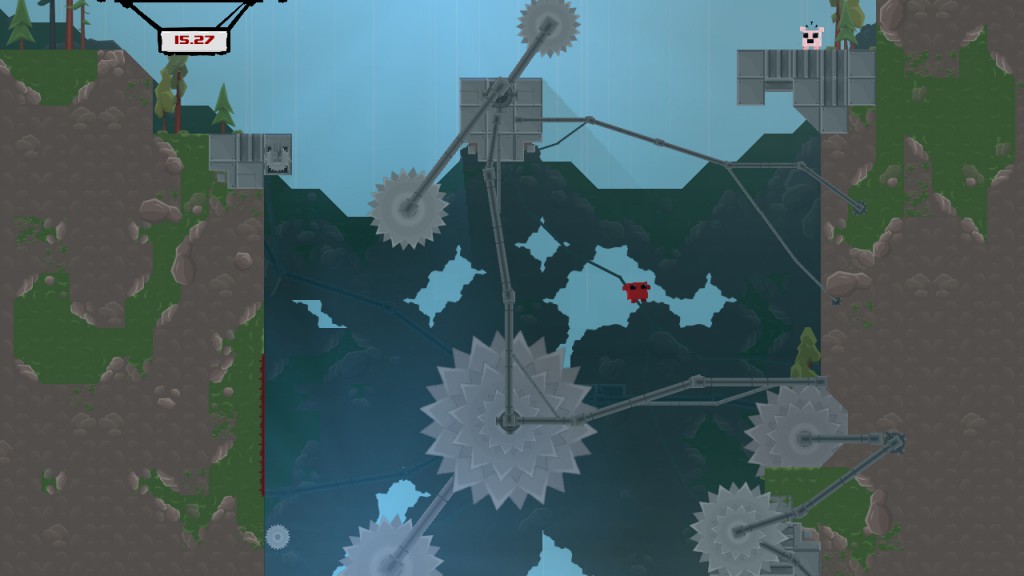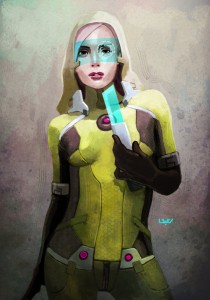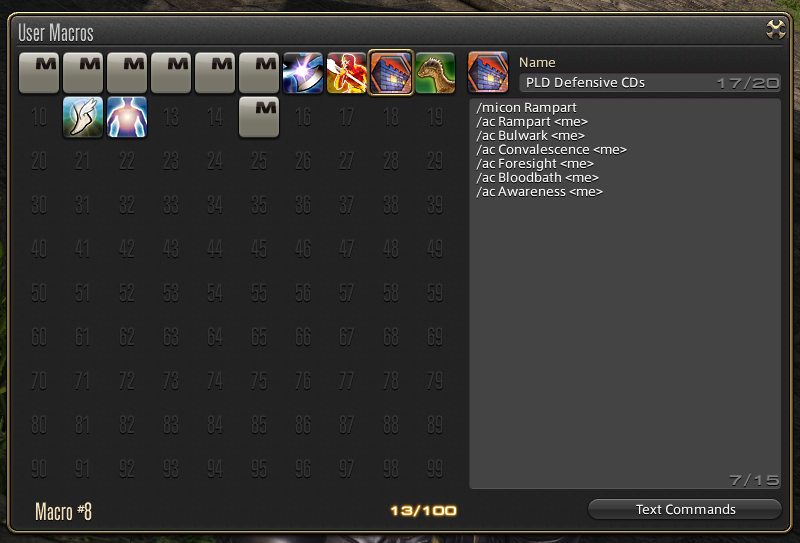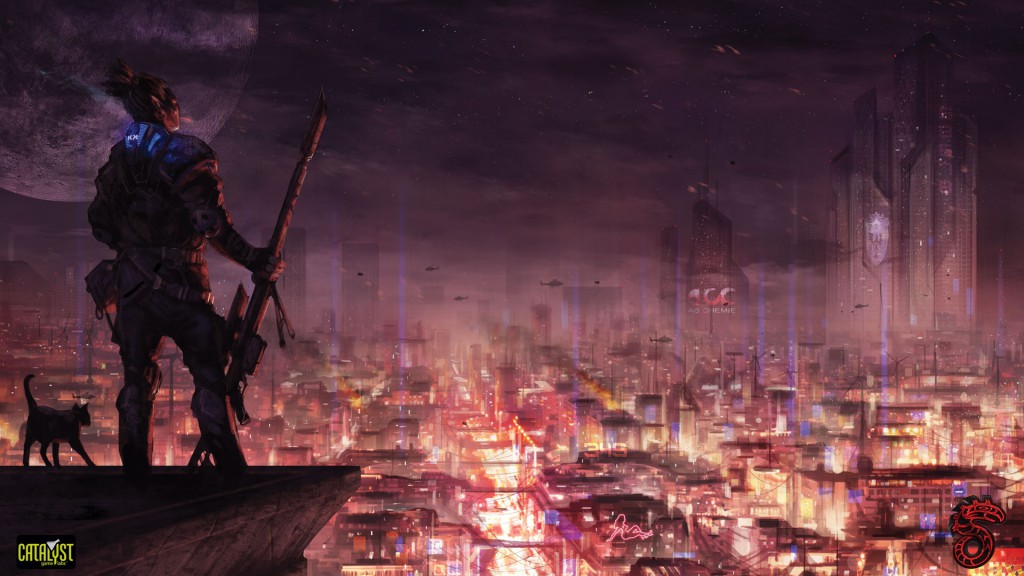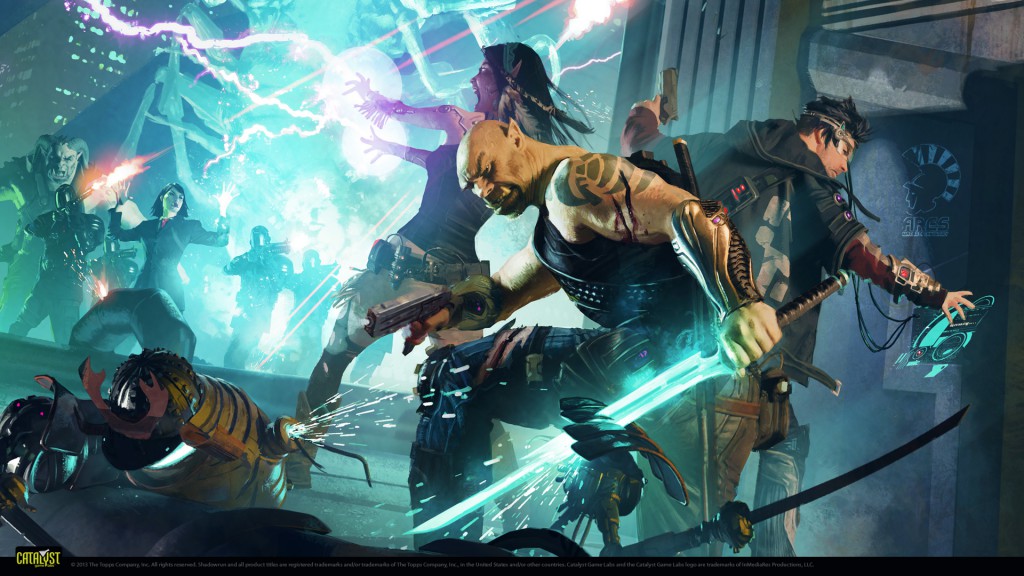On to the mages! One thing to note here (because it comes up a few times) is that certain equipment boosts the damage of elemental spells by 50%. Fire/Blizzard/Thunder/Poison rods all boost the power of their matching element when equipped. Gaia Gear boosts Earth, Air Knives boost Wind, and the Sage’s Staff boosts Holy. The Magus Rod includes all of these except Holy. The only remaining element (Water) does not have a potential equipment boost.

White Mage
 In the fiesta, White Mage is all about delayed gratification. It does have healing, but one of the things you may learn during the fiesta is that healing is generally less important than making things dead faster so they stop hitting you. Their innate command is !White, which allows casting of white magic. The only other ability they learn is MP +10% when the job is mastered. White magic includes the healing you’d expect, but also a number of useful buffs and status spells. Protect, Shell, and Blink can help you live a little longer. Confuse and Silence can keep enemies from doing much. Near the end of the game, you get access to Holy, which is the strongest single-target damage spell in the game (when cast with the Sage’s Staff).
In the fiesta, White Mage is all about delayed gratification. It does have healing, but one of the things you may learn during the fiesta is that healing is generally less important than making things dead faster so they stop hitting you. Their innate command is !White, which allows casting of white magic. The only other ability they learn is MP +10% when the job is mastered. White magic includes the healing you’d expect, but also a number of useful buffs and status spells. Protect, Shell, and Blink can help you live a little longer. Confuse and Silence can keep enemies from doing much. Near the end of the game, you get access to Holy, which is the strongest single-target damage spell in the game (when cast with the Sage’s Staff).
- White Mages struggle a lot if you get them at the start. The Flail is hidden early in the Ship Graveyard and can help a bit. Also, most of the enemies in this area are damaged by Cure, so it’s not a bad spot if you feel like you do need some grinding. On bosses, don’t forget about Protect, and Magissa is vulnerable to Silence.
- Blink allows the target it’s cast on to evade two physical attacks. Berserk causes enemies to only use physical attacks. This doesn’t work on most bosses, but it does work on Shinryu, one of the bonus bosses.
- In addition to its expected effect of halving magic damage taken, Shell also halves the hit rate of any spell that doesn’t hit 100% of the time, which includes almost all status spells. In a lot of cases, this is more useful than the damage reduction,
- In the event that you have White Mage and no other caster, Fork Tower can still be done without too much issue. Omniscient is vulnerable to Silence (and you can Dispel him to improve its hit rate), and your other damage sources can use the brief window this gives you to do damage. Repeat until dead.
Black Mage
 Black Mages cast the spells that make people fall down. They remain good at this throughout the entire game, but they see large power spikes whenever they get a new spell level (especially the -aga spells). Their innate command is !Black, and they have no innate passive. Their spell list includes 3 levels of Fire, Blizzard, and Thunder spells, along with Drain, Bio, and Flare to round out the damage dealing. They also have a few status spells (Sleep, Poison, Toad) and two ways to cause instant death (Death and Break). Mastering Black Mage earns you MP +30%. I suspect any non-mage job would get more MP from equipping !Black.
Black Mages cast the spells that make people fall down. They remain good at this throughout the entire game, but they see large power spikes whenever they get a new spell level (especially the -aga spells). Their innate command is !Black, and they have no innate passive. Their spell list includes 3 levels of Fire, Blizzard, and Thunder spells, along with Drain, Bio, and Flare to round out the damage dealing. They also have a few status spells (Sleep, Poison, Toad) and two ways to cause instant death (Death and Break). Mastering Black Mage earns you MP +30%. I suspect any non-mage job would get more MP from equipping !Black.
- This introduces quite a bit of grinding to a game that normally doesn’t require much (if any), but if you really want, Black Mages can be your primary healers. Flame Rings can be purchased in Istory in World 1, or the Phantom Village in World 3; these cause you to absorb fire spells, making Fire, Fira, and Firaga reasonable substitutes for Cure, Cura, and Curaga. The problem is the price tag: 50k gil each. I recommend the wolves in the forest near Karnak for this money.
- FF5 is not a game in which status spells are completely useless. Atomos, one of the more difficult bosses in the game for a lot of parties, can be put to sleep. Sleeping targets are not woken by spells, so this can make the fight pretty easy.
- If you can get reflect on your party, casting a spell on your entire party will do more damage to a single enemy than casting on that target directly. This does inhibit healing with White or Black magic, however.
- Against most targets, a boosted -aga level elemental spell will do more damage than Flare (which is non-elemental and can’t be boosted). The exception is against certain high-defense targets, since Flare ignores a large portion of magic defense.
Time Mage
 Time Mages illustrate that no matter what you’re doing, it’s always better to be able to do it faster. Their command is !Time, which allows casting of Time Magic. Mastering Time Mage grants Equip Rods, which also includes staves. Time Magic is mostly supportive, with a few damage spells thrown in. Haste and Slow are some of the most powerful spells in the game. The Gravity spells mostly don’t work on bosses, but can cripple random encounters. They can do passable damage eventually with Comet, and great damage at endgame with Meteor. Probably their best spell is Quick, which stops time and allows the caster to take 2 actions immediately.
Time Mages illustrate that no matter what you’re doing, it’s always better to be able to do it faster. Their command is !Time, which allows casting of Time Magic. Mastering Time Mage grants Equip Rods, which also includes staves. Time Magic is mostly supportive, with a few damage spells thrown in. Haste and Slow are some of the most powerful spells in the game. The Gravity spells mostly don’t work on bosses, but can cripple random encounters. They can do passable damage eventually with Comet, and great damage at endgame with Meteor. Probably their best spell is Quick, which stops time and allows the caster to take 2 actions immediately.
- It bears repeating that haste and slow are incredibly strong spells, when combined you’ll get about 4 actions for every turn the enemies take. The only time you don’t want to use Slow is when facing Exdeath in his castle, as he’ll counter with Haste on himself.
- The spell Return, when cast in battle, resets time back to the start of the battle. This is useful if things start going sideways, but you can also use it to reset back attacks.
- Quick is a good spell, but it’s also the second most expensive spell in the game at 77 MP per cast. Try not to overdo it.
Summoner
 Summoner has a lot of power and utility, but it’s locked up in sidequests. Their command ability is !Summon, which does what you’d expect. Mastering the job gets you !Call, which will use a random summon you’ve learned for no MP cost. The primary effect of most summons is damage, but there are some utility ones: Golem protects the party from physical damage, and Carbuncle casts reflect on all party members. Phoenix does a bit of damage, but also resurrects a party member with full HP and MP. The endgame dragons do quite a lot of damage, but Leviathan lags behind because there’s no way to boost the water element with items.
Summoner has a lot of power and utility, but it’s locked up in sidequests. Their command ability is !Summon, which does what you’d expect. Mastering the job gets you !Call, which will use a random summon you’ve learned for no MP cost. The primary effect of most summons is damage, but there are some utility ones: Golem protects the party from physical damage, and Carbuncle casts reflect on all party members. Phoenix does a bit of damage, but also resurrects a party member with full HP and MP. The endgame dragons do quite a lot of damage, but Leviathan lags behind because there’s no way to boost the water element with items.
- the first 3 summons are store-bought, the rest must be defeated in battle or otherwise acquired. Ifrit and Titan are encountered as part of the story, everything else requires seeking them out.
- Some summons are missable: Shiva is in the basement of Castle Walse, Ramuh is in the forest near Istory, Catoblepas is in a forest surrounded by mountains in World 2, and Carbuncle is in Exdeath’s castle. Ramuh gives you a second chance in the final dungeon, but he’s not relevant anymore at that point.
- Phoenix is an absolute pain to acquire (you have to climb the 30-floor Phoenix Tower) and costs 99 MP, but the fact that it restores a character to full HP/MP essentially renders your party immune to anything that doesn’t kill everyone at once.
- Somewhat large Spoiler: Going to a particular location in World 3 gives you a familiar summon, who is wind-elemental. With an air knife, it does more damage than Leviathan, and almost as much as Bahamut, for a fraction of the MP cost.
![]()
Tomorrow: Some unfortunates (and also Mystic Knight). Hope to see you at the Fiesta next week!


 Master of hitting things with swords, the Knight also has good defense. This is the only fiesta class that can equip Knightswords, which are the strongest weapons near the end of the game. Their innate command, !Guard reduces all physical damage the Knight takes to 0 for a turn. They also have the innate passive Cover, which causes them to take single-target physical attacks directed at low-health teammates. Their most notable other ability is Two-Handed, which allows you to hold a variety of weapons (swords, katanas, axes, and hammers) in two hands, which means you can’t use a shield but attack for roughly double damage. They also have the Equip abilities for shields, armor, and swords, which can be a nice boost for other classes.
Master of hitting things with swords, the Knight also has good defense. This is the only fiesta class that can equip Knightswords, which are the strongest weapons near the end of the game. Their innate command, !Guard reduces all physical damage the Knight takes to 0 for a turn. They also have the innate passive Cover, which causes them to take single-target physical attacks directed at low-health teammates. Their most notable other ability is Two-Handed, which allows you to hold a variety of weapons (swords, katanas, axes, and hammers) in two hands, which means you can’t use a shield but attack for roughly double damage. They also have the Equip abilities for shields, armor, and swords, which can be a nice boost for other classes. In the fiesta, Monk is most notable for tearing the early game to shreds, but falling behind as you get awesome weapons late in the game (unless you level a lot more than is usually necessary). Their innate command, !Kick, is the only one in the game that can’t be given to other jobs. It makes a physical attack on all enemies (ignoring row if you’re playing the mobile version). They have the innate passive of Counter, which causes them to sometimes attack enemies that hit them with physical attacks. Monks can also learn other commands: !Chakra gives a small heal that also cures poison and blind, and !Focus causes the character to charge for a turn before striking for double damage. Finishing off the class gives you a set of HP+ abilities, finishing with HP +30%. Monks already have a lot of HP, but this can be a big help to classes that have unfortunate HP situations, like Bard, Dancer, and Red Mage.
In the fiesta, Monk is most notable for tearing the early game to shreds, but falling behind as you get awesome weapons late in the game (unless you level a lot more than is usually necessary). Their innate command, !Kick, is the only one in the game that can’t be given to other jobs. It makes a physical attack on all enemies (ignoring row if you’re playing the mobile version). They have the innate passive of Counter, which causes them to sometimes attack enemies that hit them with physical attacks. Monks can also learn other commands: !Chakra gives a small heal that also cures poison and blind, and !Focus causes the character to charge for a turn before striking for double damage. Finishing off the class gives you a set of HP+ abilities, finishing with HP +30%. Monks already have a lot of HP, but this can be a big help to classes that have unfortunate HP situations, like Bard, Dancer, and Red Mage. Thief isn’t the strongest class in the game, but it does have a lot going for it. Their most notable feature is their innate command, !Steal, which does what you’d expect. It’s useful for healing items, money-making, and access to a variety of equipment that’s difficult or impossible to get otherwise. They have multiple innate passives: Sprint speeds up movement, Vigilance entirely prevents back attacks, and Find Passages shows hidden passages. Their other learned commands are !Mug, which steals along with an attack, and !Flee, which will instantly run from any battle where you could run normally. Sadly there’s not much here for other classes, as you get the full benefits of all of the thief’s passives with a single thief in the party. The only exception is Artful Dodger, which can grant the thief’s agility (which is the highest in the game) to whoever you equip it on.
Thief isn’t the strongest class in the game, but it does have a lot going for it. Their most notable feature is their innate command, !Steal, which does what you’d expect. It’s useful for healing items, money-making, and access to a variety of equipment that’s difficult or impossible to get otherwise. They have multiple innate passives: Sprint speeds up movement, Vigilance entirely prevents back attacks, and Find Passages shows hidden passages. Their other learned commands are !Mug, which steals along with an attack, and !Flee, which will instantly run from any battle where you could run normally. Sadly there’s not much here for other classes, as you get the full benefits of all of the thief’s passives with a single thief in the party. The only exception is Artful Dodger, which can grant the thief’s agility (which is the highest in the game) to whoever you equip it on. Blue Magic is one of the best all-around toolboxes in the game, with the obvious downside of having to learn your abilities from enemies. Their innate command is !Blue, which allows casting any blue magic learned by the party. Their innate passive is Learning. As long as a character with Learning is affected by a Blue Magic spell, it will be learned when you win the battle (the character in question does not need to be alive). The other blue magic abilities are !Check, which shows enemy HP, and !Scan, which also shows level, weaknesses, and any status effects. Notable Blue magic spells include the Aero series (damage spells), Vampire (hp absorb based on caster’s missing health), White Wind (party heal based on caster’s current health), Death Claw (reduces an enemy to single-digit HP and causes paralysis), and Level 5 Death (kills all enemies with a level divisible by 5). This is one of my favorite classes in the game.
Blue Magic is one of the best all-around toolboxes in the game, with the obvious downside of having to learn your abilities from enemies. Their innate command is !Blue, which allows casting any blue magic learned by the party. Their innate passive is Learning. As long as a character with Learning is affected by a Blue Magic spell, it will be learned when you win the battle (the character in question does not need to be alive). The other blue magic abilities are !Check, which shows enemy HP, and !Scan, which also shows level, weaknesses, and any status effects. Notable Blue magic spells include the Aero series (damage spells), Vampire (hp absorb based on caster’s missing health), White Wind (party heal based on caster’s current health), Death Claw (reduces an enemy to single-digit HP and causes paralysis), and Level 5 Death (kills all enemies with a level divisible by 5). This is one of my favorite classes in the game.